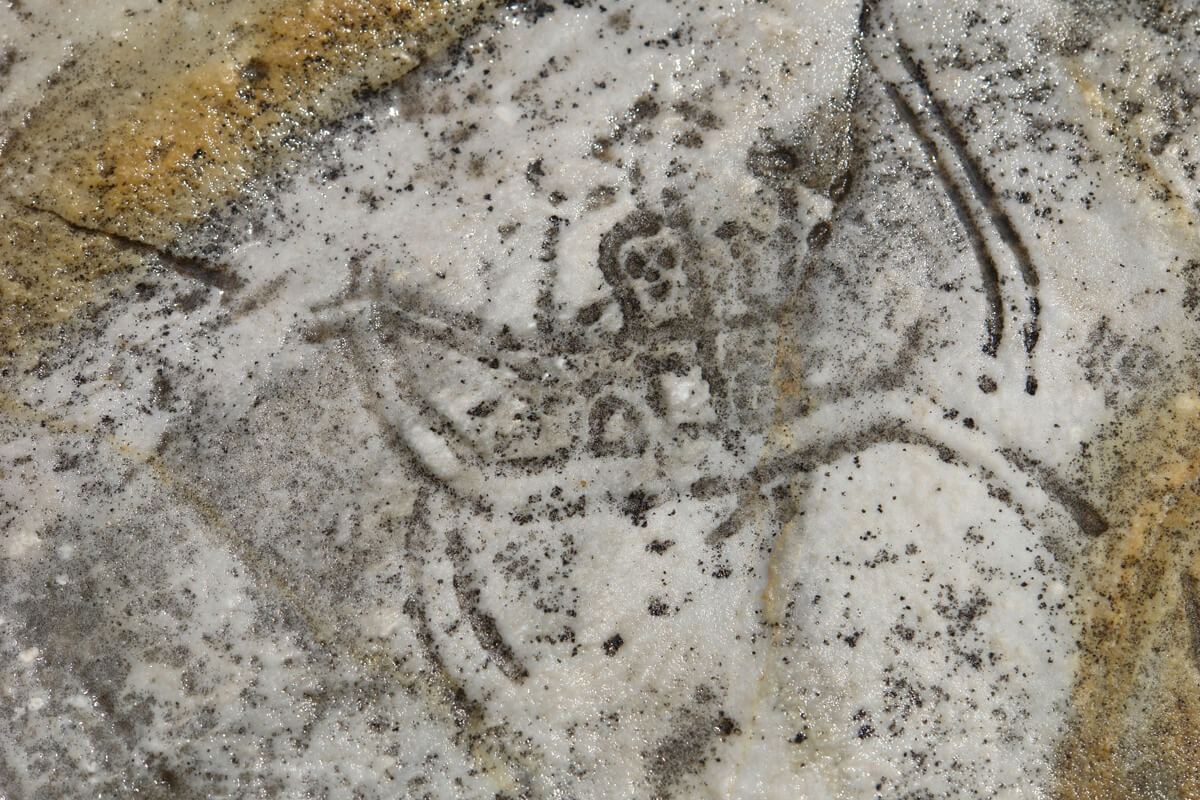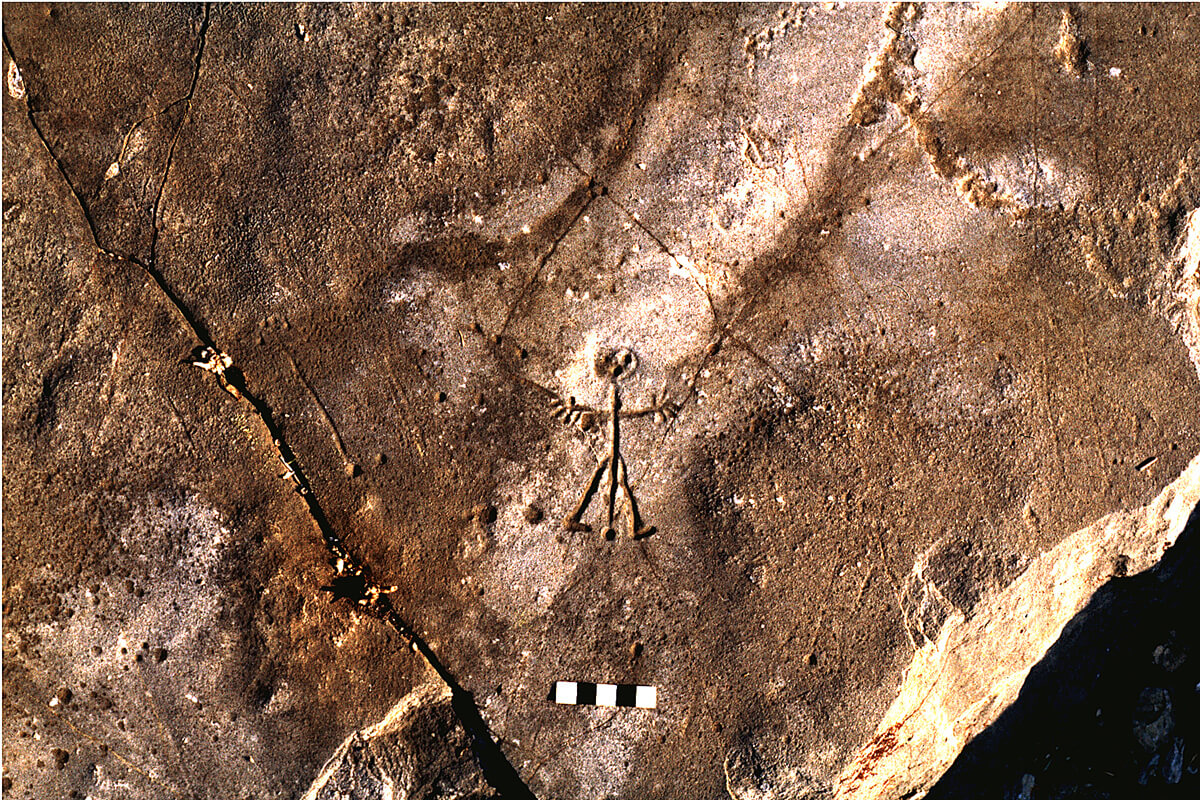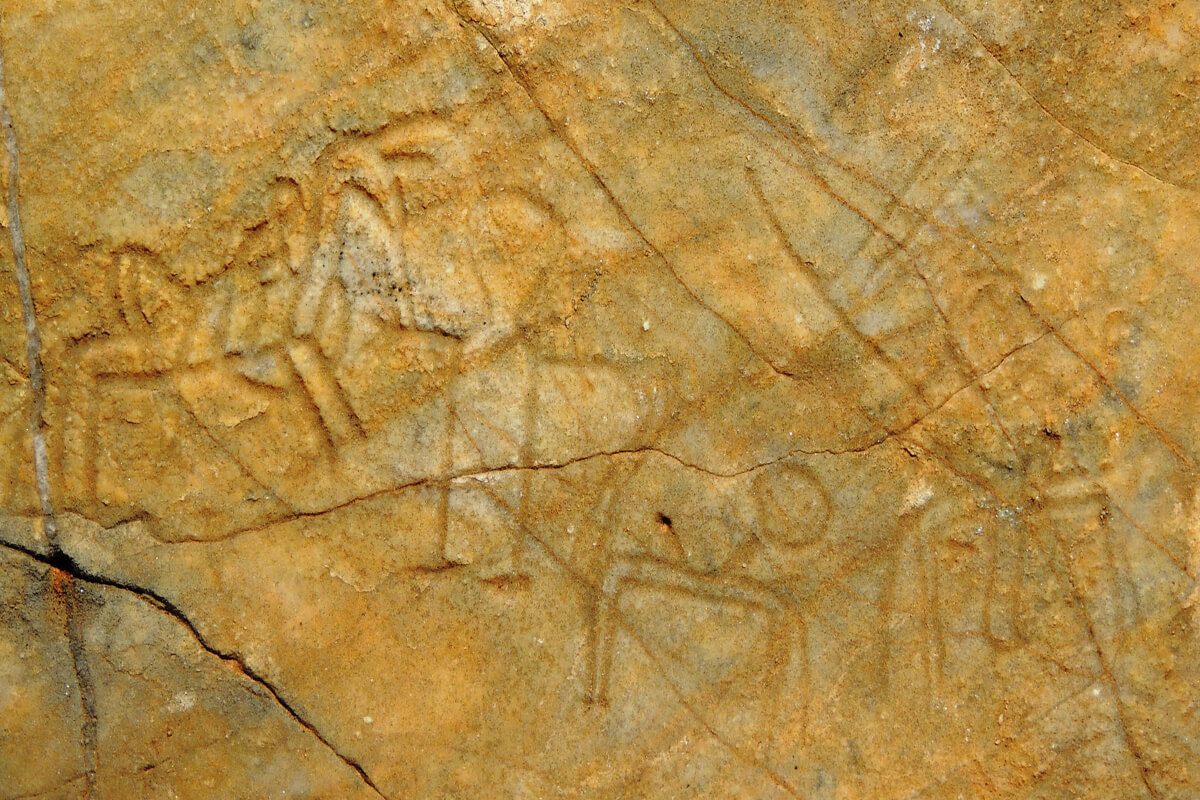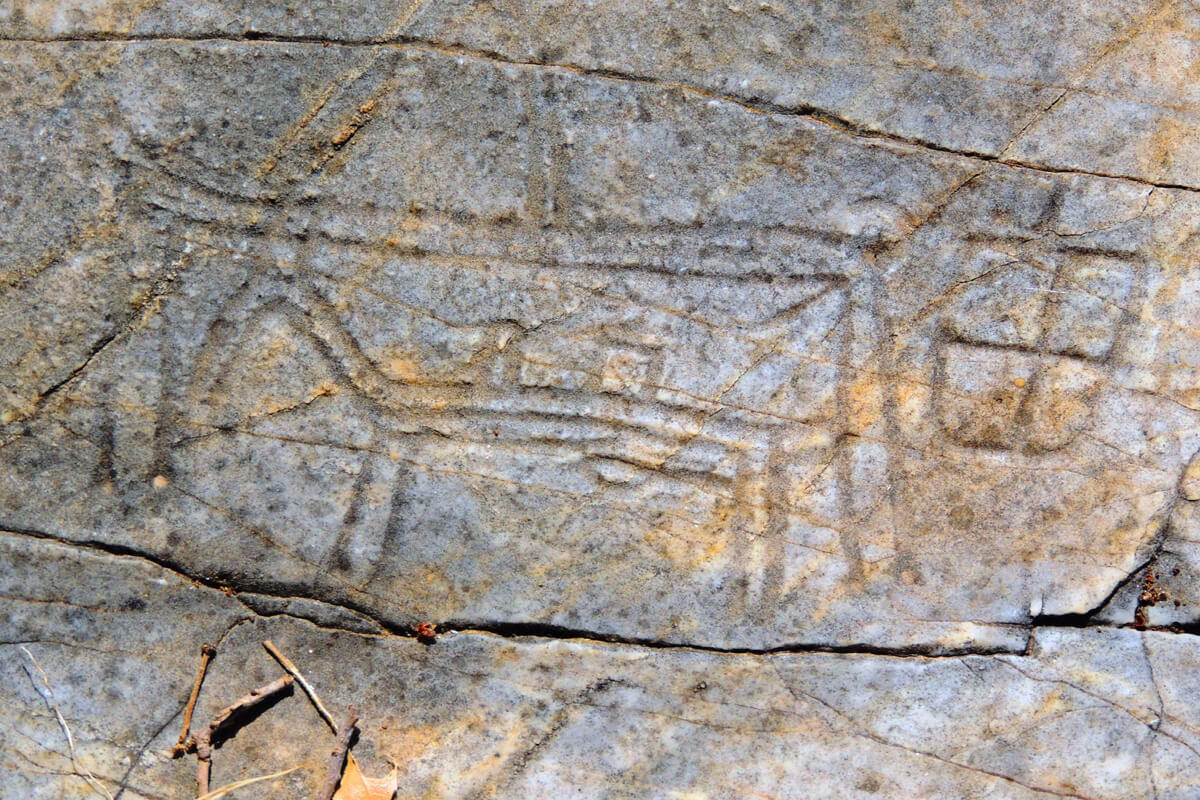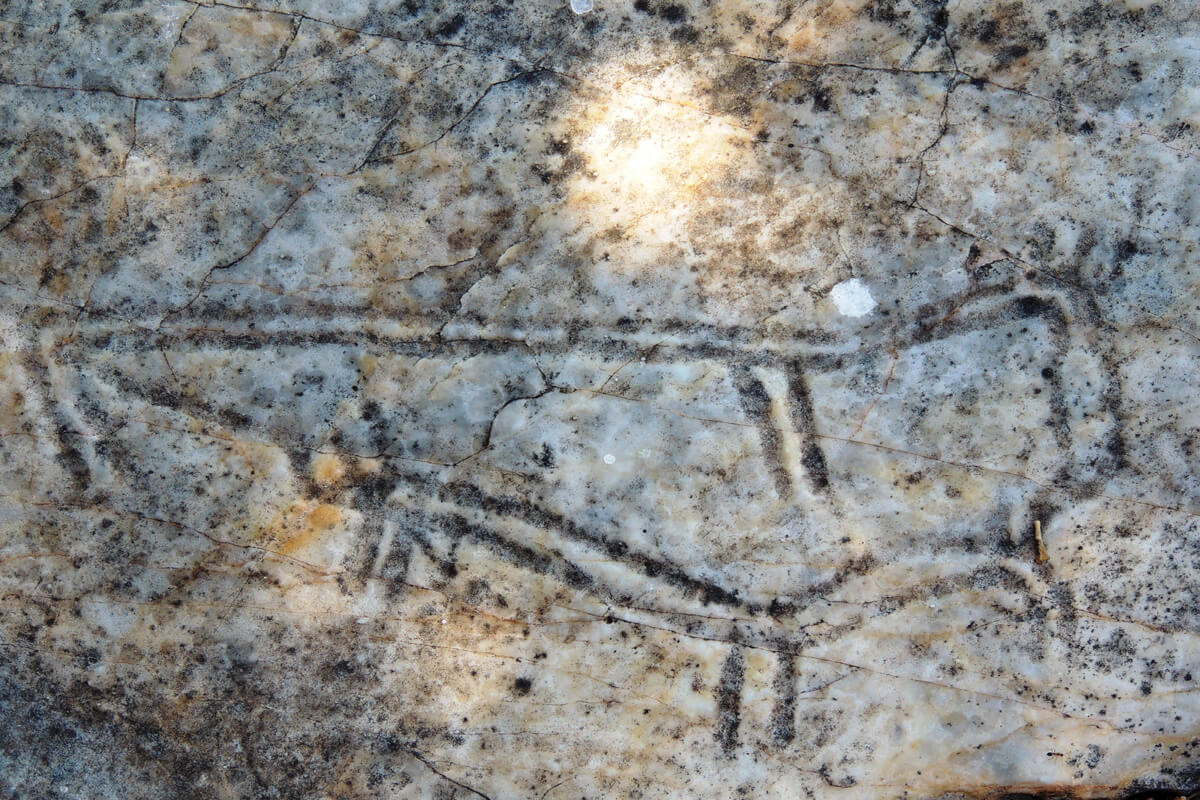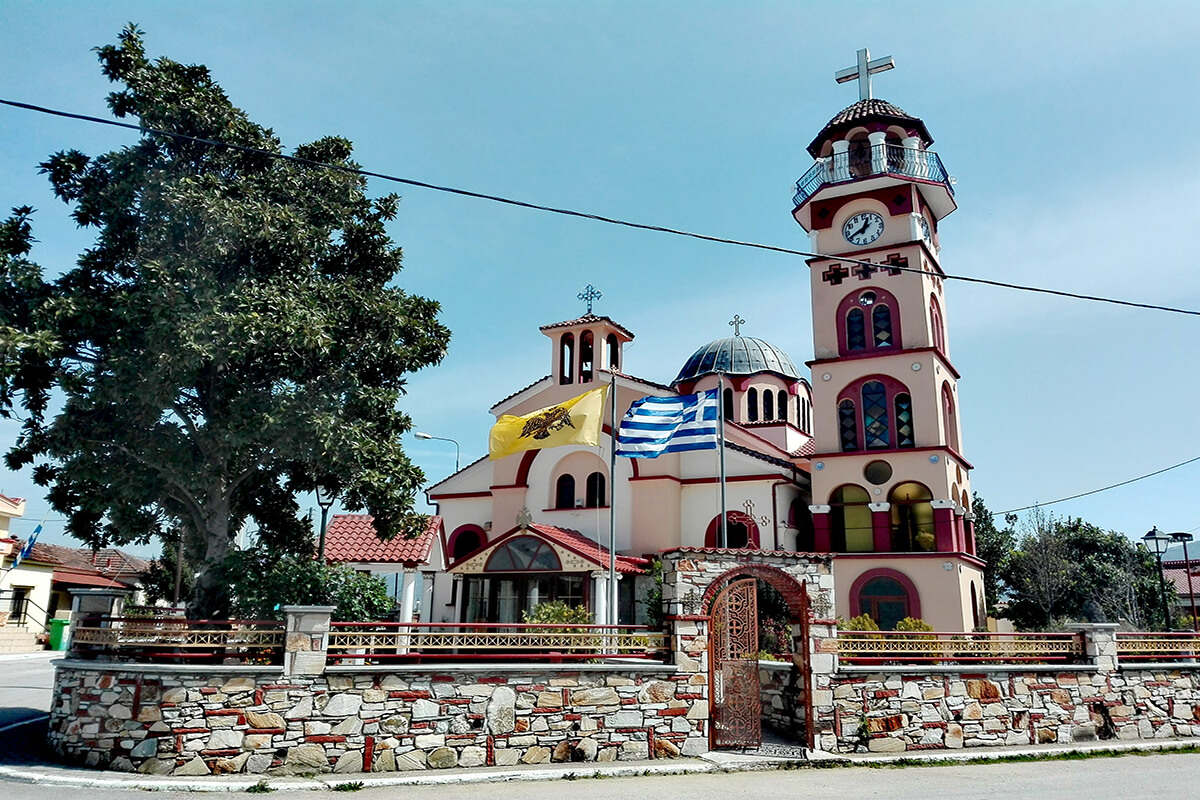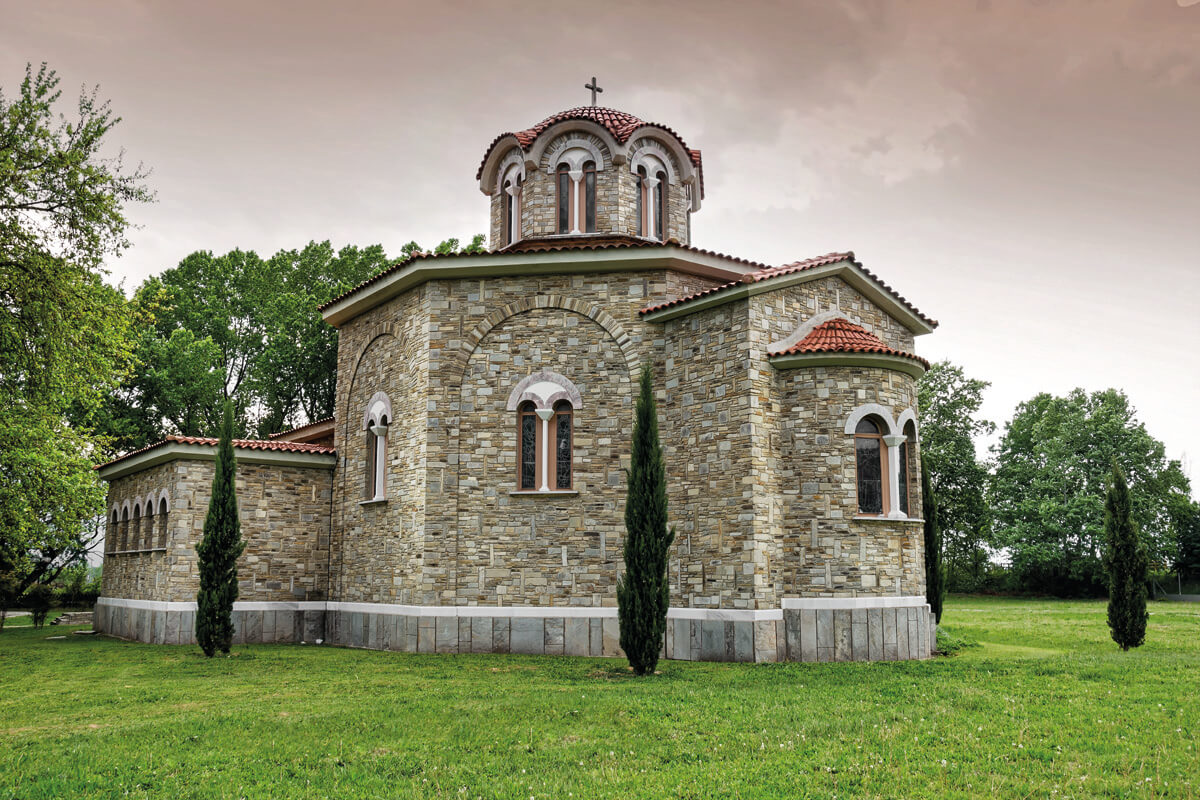
ROCK ART
ROCK ART
photo by Dimofeleia archive
Rock art engraved into outdoor horizontal limestone surfaces has been discovered at the spot known as Profitis Ilias, southeast of the village of Philippi in the Municipality of Kavala. The way in which the space is arranged suggests three main zones: one zone to the north of the Philippi-Kryoneri road and two to the south of this road.
In all the zones we find fine engravings of animals (dogs, foxes, deer, horses), weapons (arrows, arrowheads, axes) as well as abstract engravings. The most common representations are of a figure on horseback, often armed (scenes of hunting or battle). The engravings have been made with a thin, sharp tool. There are often many images on the same surface, yet they have different orientations and overlap, showing that the engravings must have been made in different periods.
Engravings made using a similar technique have been found at the foot of the small hill northeast of the village of Philippi and near the village of Kryoneri. The site of Profitis Ilias is the most important, however, as it contains the largest and best-preserved group of rock art engravings. At other sites, sections of the rock art have been destroyed, mainly by treasure hunters.
We do not as yet have enough evidence in order to date the rock art. Based on the style of the engravings, however, it is very possible that they cover a broad timeframe, from the prehistoric era until the Middle Ages.
HOW TO GET HERE
Enter your address
